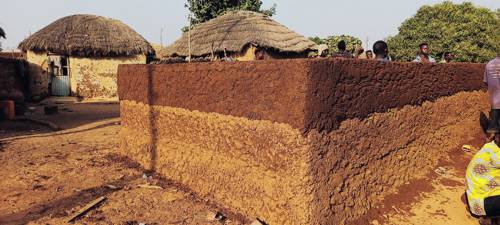
FAQ About The Influence of Indigenous Architecture on Sustainable Design

What is indigenous architecture?
Indigenous architecture refers to the use of traditional building methods and styles that have been developed by indigenous peoples over centuries. These practices are typically adapted to local climates, materials, and cultural needs, and they often emphasize sustainability and harmony with the environment.

How does indigenous architecture contribute to sustainable design?
Indigenous architecture contributes to sustainable design by utilizing local materials, minimizing environmental impact, and emphasizing harmony with natural landscapes. These practices often incorporate passive solar heating, natural ventilation, and designs that align with local ecosystems, all of which are key principles in modern sustainable design.

What are some common materials used in indigenous architecture?
Common materials used in indigenous architecture include earth (such as adobe or cob), wood, stone, and thatch. These materials are often locally sourced, biodegradable, and have low environmental impact, contributing to the sustainability of the structures.

Can modern architects learn from indigenous building techniques?
Yes, modern architects can learn a great deal from indigenous building techniques. These methods offer insights into creating more sustainable and environmentally integrated buildings by harnessing natural resources, using passive design strategies, and understanding regional climates and ecosystems.

What are examples of indigenous architecture influencing modern sustainable design?
Examples include the use of adobe walls for thermal mass in desert regions, green roofs inspired by sod roofs of Scandinavian homes, and earth-sheltered architecture that mimics traditional underground dwellings. These designs reflect a return to local materials and culturally relevant building practices.

Why is climate an important factor in indigenous design?
Climate is a crucial factor in indigenous design as it shapes the methods and materials used in construction. Indigenous designs are often finely tuned to the particular climate of a region, maximizing comfort and efficiency with minimal energy input by aligning with solar patterns, wind direction, and precipitation levels.

What role do cultural beliefs play in indigenous architecture?
Cultural beliefs often play a significant role in the design and construction of indigenous architecture. These buildings can embody spiritual or communal values, align with cultural practices, and reflect a deep understanding of the land and its resources, promoting sustainable and respectful habitation of a place.

How does passive solar heating relate to indigenous architecture?
Passive solar heating is a technique that has been employed in many forms of indigenous architecture. By strategically orienting buildings to take advantage of the sun's path and using materials that absorb and slowly release solar heat, these designs maintain comfortable temperatures without relying on mechanical systems.

In what ways do indigenous designs promote biodiversity?
Indigenous designs often promote biodiversity by integrating green spaces and using landscaping that supports native plant species. They typically avoid disrupting local ecosystems, maintain natural habitats, and employ building techniques that encourage ecological balance and resilience.

How is natural ventilation used in indigenous architecture?
Natural ventilation in indigenous architecture is achieved through building orientation, openings that enhance airflow, and structural components like open roofs or courtyards. This method reduces the need for mechanical cooling, leveraging breezes and thermal convection to cool and ventilate indoor spaces effectively.

What is the significance of local materials in sustainable design?
Local materials are significant in sustainable design because they reduce transportation energy costs, support local economies, and often possess properties well-suited to the local climate. These materials also tend to be environmentally friendly, as they require minimal processing and can be sourced renewably and sustainably.

Are there any challenges in integrating indigenous practices into modern architecture?
Challenges include bridging the gap between traditional knowledge and modern architectural standards, addressing building codes that may not accommodate indigenous methods, and overcoming misconceptions about the efficacy and relevance of traditional designs in contemporary contexts.

How does indigenous architecture address water conservation?
Indigenous architecture often incorporates rainwater harvesting, uses permeable surfaces, and designs that minimize water runoff and evaporation. By promoting mindful water use and integrating natural hydrological cycles, these practices contribute to sustainable water management in building developments.

Can indigenous architecture be adapted to urban environments?
Yes, indigenous architecture can be adapted to urban environments by integrating traditional practices such as green roofs, local materials, and community-focused spaces. Urban applications may require innovative adaptations to traditional methods to fit denser settings while maintaining their sustainable principles.

What is the role of community in indigenous architectural practices?
The community plays a central role in many indigenous architectural practices, often participating in the design and construction process. This communal involvement ensures the structures meet the social, cultural, and environmental needs of the people using them, fostering a sense of ownership and responsibility toward the built environment.

How does indigenous knowledge enhance modern sustainability efforts?
Indigenous knowledge enhances modern sustainability efforts by providing time-tested practices that have proven effective in preserving ecosystems and promoting resource efficiency. By integrating these techniques with contemporary technologies, new approaches to sustainable design can be developed.

Why are energy efficiency and indigenous architecture closely linked?
Energy efficiency and indigenous architecture are closely linked because traditional designs utilize natural resources to maintain comfort with minimal energy use. Using principles such as passive solar design, natural cooling, and locally available materials, indigenous architecture creates energy-efficient living spaces.

What are some modern buildings influenced by indigenous designs?
Modern buildings influenced by indigenous designs include the Australian Indigenous Health Services Building, which incorporates local materials and solar orientation, and the Zuni Solar Pueblo, which uses traditional pueblo techniques combined with solar energy technologies. These examples highlight how traditional concepts can lead to innovative sustainable architecture.

How can urban planners incorporate indigenous architecture principles?
Urban planners can incorporate indigenous architecture principles by prioritizing green spaces, using local materials, leveraging natural light and ventilation, and fostering community participation in development processes. These practices help create sustainable frameworks for urban development that align with indigenous values.

Is there a movement to preserve indigenous architectural practices?
Yes, there is a growing movement to preserve and revitalize indigenous architectural practices. This movement focuses on recognizing the value of traditional knowledge, ensuring its transmission to future generations, and integrating these sustainable practices into modern architecture to address contemporary environmental challenges.
